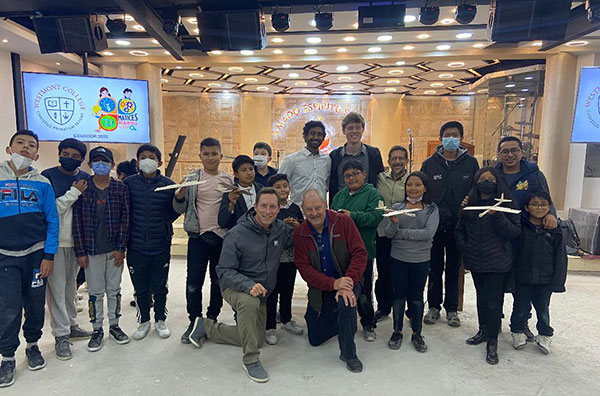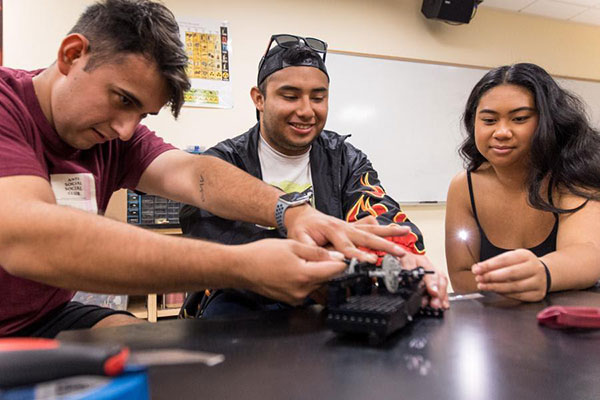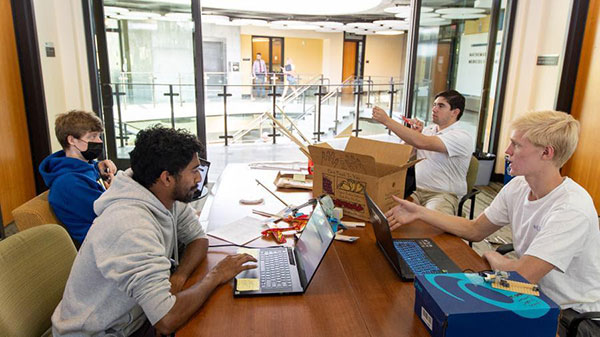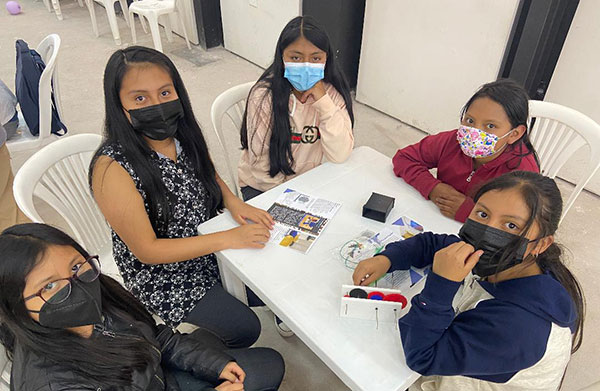
This Westmont student project was created to allow the students from an engineering design course to learn how to take on a real-world project through the Design Innovation process as well as to create a product that can have a positive impact on underprivileged children in Ecuador. Images courtesy of Jim Romeo.
Latest News
November 10, 2022
Westmont College, an undergraduate, residential, Christian, liberal arts college and community in California, runs a project that involves students from an engineering design course. These students can learn how to take on a real-world project through design innovation as well as to create a product that can have a positive impact on underprivileged children in Ecuador.
In particular, the project is to enhance science, technology, engineering and math (STEM) education in Ecuador. The work is part of a partnership between Compassion International and Westmont as part of the Christian Collective for Social Innovation (CCSI).
The project began with a contact in Ecuador who runs an after-school program for students in southern Quito. The program provides STEM experiences and training for students aged 7-17. The goal was to design an educational kit that fulfilled several criteria including being inexpensive and engaging, as well as applying electronics, physics and engineering content.

To learn more about this effort, we spoke to Dr. Dan Jensen, an engineering professor at Westmont and the director for the engineering program. Westmont student Jared Lush, who has worked on this project along with other Westmont students, contributed as well. Here’s how our conversation went.
Digital Engineering: Can you tell us about some of the designs that are part of the event and how they came to be?
Dr. Dan Jensen: The design for the younger students uses gears, magnets and a coiled magnetic copper wire to generate an alternating current, which illuminates a tiny LED light bulb. This group’s focus was to minimize the cost of the individual kit as much as possible and to create a modular prototype that engages the Ecuadorian students with a hands-on process and teaches technical concepts like power generation and gear ratios.
The Ecuadorian students had a blast assembling the kits and playing the different gear ratios. All the teams were successful in creating the power generation assembly and getting the power to light the LED.

The second group’s prototype for high school-aged students includes a small balsa wood glider and winch assembly, which launches the glider. The winch assembly includes electronics and programming. The kit was designed for kids to independently use along with their previous knowledge with engineering and electronics and to have a fun time learning principles from several fields such as aerodynamics and basic programming.
DE: Can you provide some examples of what the event has produced or what you expect it to produce?
Jensen: The culmination of our semester-long project led each Westmont student design team to a prototype ready to be sent to its intended user. Instead of solely manufacturing and sending down kits to Ecuador, we chose to build a connection with the people there as well as refine the kits with insights from the interactions with the Ecuadorian students.
A few members from the teams, Sebastian Vethan and Jared Lush, traveled with Dr. Jensen to Ecuador. Our Ecuadorian colleagues created “STEM Days in Quito,” Ecuador in May. Five different teams of Ecuadorian students used the different kits each day.

We learned many things about how the Ecuadorian students engaged with the technology and how we can improve the kits and further assist the STEM program in Ecuador. We are currently working on a final iteration of the kits to best fit the needs of the children in Ecuador by lowering the price of the kits and the part weight and also by allowing them to source parts at their location. We are also exploring the possibility of working with our Ecuadorian partners to create a company that can continue the work.
DE: Does Westmont have a particular stance on adopting an innovation that is linked to the program? What drove them to sponsor the event and coordinate it?
Jensen: Westmont’s engineering program seeks to use our technical knowledge to benefit others. This aligns with the Christian mission of the college.
The initial work has been funded by a generous gift from a private donor to Westmont’s engineering program, specifically for this work. Our Ecuadorian contact is Fernando Santamaria. He is head of a program called Matices Academia that runs the after-school programs in Ecuador.
Subscribe to our FREE magazine, FREE email newsletters or both!
Latest News
About the Author
Jim Romeo is a freelance writer based in Chesapeake, VA. Send e-mail about this article to [email protected].
Follow DERelated Topics
All topics



